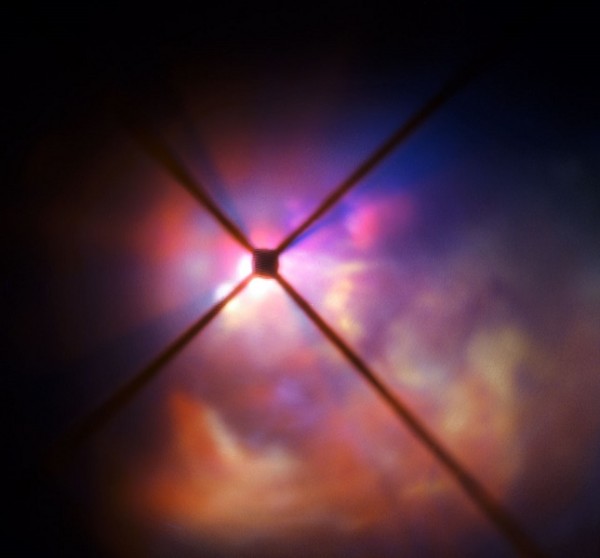Dying Hypergiant Star is Shedding 30 Earths Every Year
| Ana Verayo | | Nov 26, 2015 06:50 AM EST |
(Photo : ESO) The VY Canis Majoris is a red hypergiant star, currently shedding stellar mass equal to 30 Earths every year.
Scientists were surprised to observe a cosmic giant that is apparently losing so much mass, that can be equated to 30 Earths every year.
This massive star is known as the VY Canis Majoris which is also considered to be the top five largest known stars in the Milky Way galaxy. This stellar behemoth is located some 3,800 light years away, in the constellation Canis Major where this red hypergiant is bloating with a mass of almost 40 suns. The VY Canis Majoris is so huge that its outermost layers can reach up to Jupiter's orbit from the sun.
Like Us on Facebook
However, astronomers believe that the VY Canis Majoris is already approaching stellar death, as it is now entering its final stages of stellar hyperlife where it is already in the process of rapidly swelling outwards, shedding star material into deep space.
Astronomers used the Spectro-Polarimetric High-contrast Exoplanet Research instrument (SPHERE) in order to observe this phenomenon, that is mounted on the European Space Observatory's Very Large Telescope in Chile. With these new observations, astronomers were able to obtain direct observations of the VY Canis Majoris and its scattering and polarizing light, by dust and gas clouds that are emitted by this aging star.
Since every year, the VY Canis Majoris can shed a mass equal to 30 Earths, most of them are large dust particles that are huge enough to be incorporated and dragged outward the radiation pressure from an expanding star, and also survive an inevitable supernova that will soon destroy the massive star.
According to lead author of the study Peter Scicluna from the Academia Sinica Institute for Astronomy and Astrophysics, Taiwan, massive stars often have short lives, and when they are in their final days, they practically lose so much mass.
Prior studies about this mass shedding event in stars can only be theorized however, using SPHERE data, this is now considered as direct evidence of this phenomenon, where large grains of dust enshroud this hypergiant. Since they are large enough to be pushed away from the extreme radiation pressure, this is a telltale sign of the star's rapid loss of mass.
The demise of the gargantuan star will occur soon, in astronomical terms, in another few hundred thousand years. When the VY Canis Majoris meets its demise, it will become a stunning sight from Earth, shining as bright as a full moon.
Tagshypergiant star, hypergiant star shedding losing 30 earths, massive star weight loss, dying hypergiant stars, VY Canis Majoris, ESO, ESO VLT, red hypergiant star, milky way galaxy
©2015 Chinatopix All rights reserved. Do not reproduce without permission
EDITOR'S PICKS
-

Did the Trump administration just announce plans for a trade war with ‘hostile’ China and Russia?
-

US Senate passes Taiwan travel bill slammed by China
-

As Yan Sihong’s family grieves, here are other Chinese students who went missing abroad. Some have never been found
-

Beijing blasts Western critics who ‘smear China’ with the term sharp power
-

China Envoy Seeks to Defuse Tensions With U.S. as a Trade War Brews
-

Singapore's Deputy PM Provides Bitcoin Vote of Confidence Amid China's Blanket Bans
-

China warns investors over risks in overseas virtual currency trading
-

Chinese government most trustworthy: survey
-

Kashima Antlers On Course For Back-To-Back Titles
MOST POPULAR
LATEST NEWS
Zhou Yongkang: China's Former Security Chief Sentenced to Life in Prison

China's former Chief of the Ministry of Public Security, Zhou Yongkang, has been given a life sentence after he was found guilty of abusing his office, bribery and deliberately ... Full Article
TRENDING STORY

China Pork Prices Expected to Stabilize As The Supplies Recover

Elephone P9000 Smartphone is now on Sale on Amazon India

There's a Big Chance Cliffhangers Won't Still Be Resolved When Grey's Anatomy Season 13 Returns

Supreme Court Ruled on Samsung vs Apple Dispute for Patent Infringement

Microsoft Surface Pro 5 Rumors and Release Date: What is the Latest?










